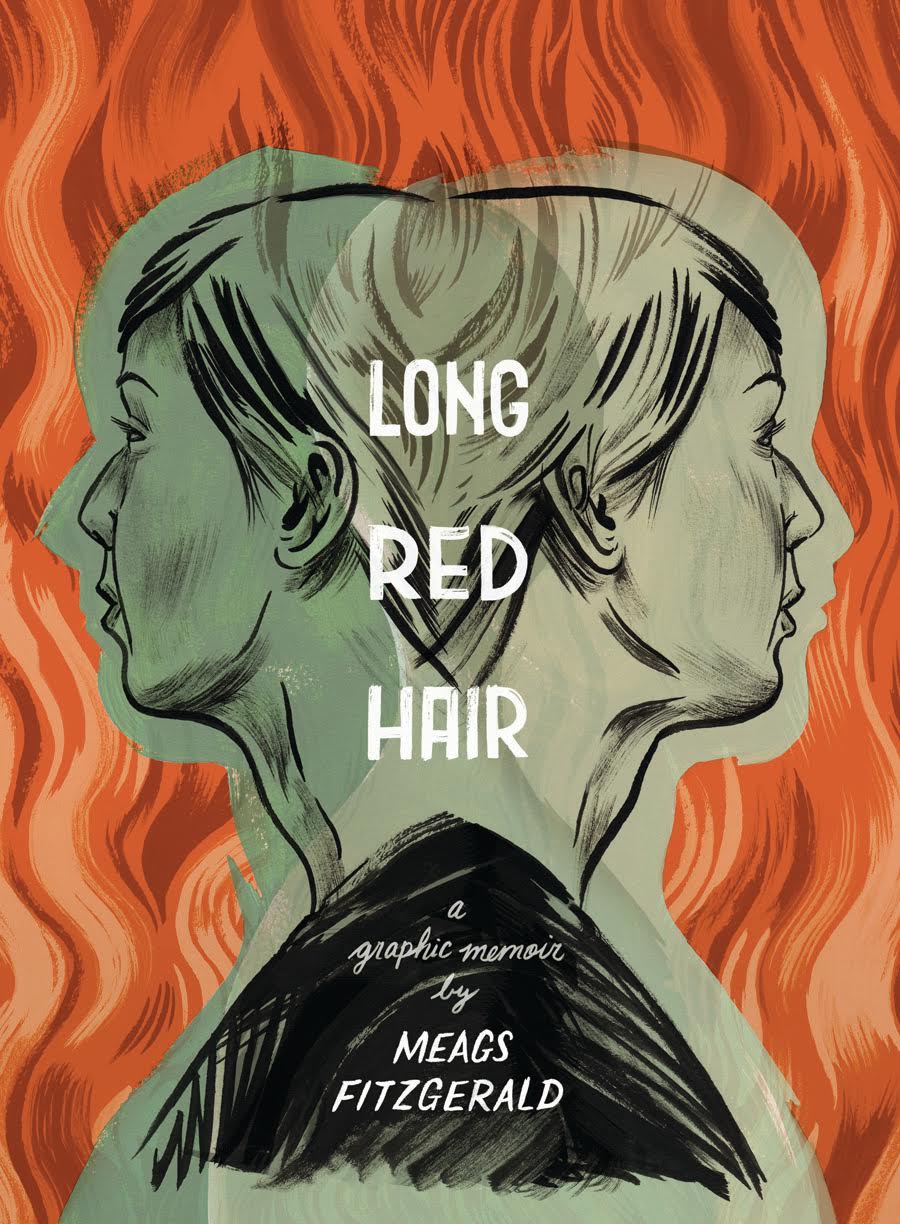Everybody’s childhood is infused with magic – it’s just that very few of us can recognize it. Long Red Hair, an autobiographical graphic novel by Meags Fitzgerald, invites us to share some of the author’s own enchanted memories. Like magic, not all of the memories in the book are good, but all of them are captivating.
Long Red Hair’s back cover claims that “Fitzgerald suspects that she is unlike her friends,” but that’s not quite right. When she meets her father’s gay friend in the opening pages, it’s clear that she recognizes and resonates with his difference on a subliminal level. However, in the story that immediately follows, she strives to be different, but in a ‘normal’ way. In other words, Fitzgerald, as a queer woman with a strong interest in the world of make-believe, has always known that she’s different, and alternates between accepting and rejecting that difference.
Struggling with not being ‘special’ is another major theme of the graphic novel. As children, we are often told that we are “special” or “unique” by our parents, but the simple fact is that not everybody can be special. Everyone can, however, be different, and Fitzgerald shares with us her intimate journey to that realization.
Long Red Hair’s back cover claims that “Fitzgerald suspects that she is unlike her friends,” but that’s not quite right.
The movies and books that helped Fitzgerald become the person she is today feature prominently throughout Long Red Hair. They show us what a transformative effect supernatural and mythological monsters have had on Fitzgerald’s life.
Our generation didn’t necessarily grow up with creature features, but we have nonetheless been surrounded by urban legends and supernatural entities. From Buffy the Vampire Slayer to Charmed to Beetlejuice, otherworldly characters have been a staple in Fitzgerald’s life, and there’s no surprise as to why – these stories depict people embracing their differences and drawing power from them.
In this way, Fitzgerald learned to embrace her bisexuality. She uses her penchant for the supernatural, her comfort with singlehood, and even her artistic skills as sources of strength.
Although Long Red Hair is a testament to Fitzgerald’s storytelling skills, her art is what truly steals the show. Adjusting her drawing style to every story, Fitzgerald sets the right mood for each of her memories. Her recollections from childhood and early adolescence are drawn in a hazy, nostalgic manner, with only the media she consumed drawn clearly. The lines of everyone’s faces are relaxed, the shading is deep, and the base colour is a warm rust red, for a combined effect of a sketched sepia that allows the reader to sink into her past.
In this way, Fitzgerald learned to embrace her bisexuality. She uses her penchant for the supernatural, her comfort with singlehood, and even her artistic skills as sources of strength.
The pages detailing her more recent memories are drawn with cooler base colours and sharper lines, conveying a sense of stark reality. Fitzgerald’s art gives Long Red Hair multiple layers; it takes the reader from a murky, dreamy past to a clear, immediate present.
Overall, reading Long Red Hair feels like taking a bubble bath – it’s warm, comforting, and nostalgic. It’s the sort of book with which you curl up, drink tea, and unwind.
